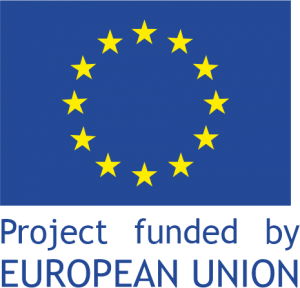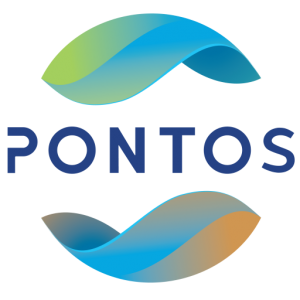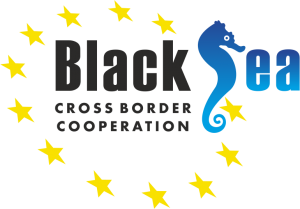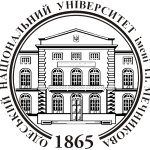 AUA Acopian Center for the Environment
AUA Acopian Center for the Environment
The American University of Armenia (AUA) Acopian Center for the Environment is the Lead Partner of the PONTOS Project.
The AUA Acopian Center for the Environment, a research center of the American University of Armenia, promotes the protection and restoration of the natural environment through research, education, and community outreach. The AUA Acopian Center’s focus areas include sustainable natural resource management, biodiversity, and conservation, greening the built environment, clean energy, and energy efficiency, as well as information technology and the environment.
The AUA is a private institution of higher learning, offering a global education in Armenia. Founded in 1991, AUA provides a high-quality, graduate, and undergraduate education that encourages civic engagement and promotes democratic values, fostering scholarship in a setting that values and develops academic excellence, free inquiry, integrity, scholarship, leadership, entrepreneurship, and service to society. AUA has over 1,800 students enrolled in 8 masters and 4 bachelor degree programs. In addition, the University has 9 research and community development centers in environmental protection, public health, business, economics, entrepreneurship, law, computational and industrial engineering, teaching English, and public policy.
Role in the Project: As a lead partner, the AUA Acopian Center for the Environment manages the GA of Management and GA of Communication, coordinates the Armenian pilot, and takes part in GA-2 activities for capacity building.
 Centre for Research and Technology Hellas
Centre for Research and Technology Hellas
The Centre for Research and Technology Hellas (CERTH) is one of the largest research centers in Greece. It was founded in 2000 and is located in Thessaloniki. Its mission is to promote the triplet Research – Development – Innovation by conducting high-quality research and developing innovative products and services while building strong partnerships with industry and strategic collaborations with academia and other research and technology organizations in Greece and abroad.
CERTH consists of five (5) Institutes and the Central Directorate and is governed by its Board of Directors. The institutes are the Information Technologies Institute (ITI), the Chemical Process & Energy Resources Institute (CPERI), the Hellenic Institute of Transport (HIT), the Institute of Applied Biosciences (INAB), and the Institute of Bio-Economy and Agri-Technology (iBO). CERTH is essentially a self-supported Research Centre generating an average annual turnover of ~€25 Million coming from: >30% from bilateral industrial research contracts, >60% from competitive research projects, and <10% as government institutional funding.
The Centre for Research and Technology Hellas – Information Technologies Institute (CERTH-ITI) is one of the leading Institutions of Greece in the fields of Informatics, Telematics, and Telecommunications, with long experience in numerous European and national R&D projects. It is active in a large number of application sectors (energy, health, manufacturing, robotics, (cyber)security, transport, smart cities, space (incl. earth observation), agrifood, water and technology areas, such as data and visual analytics, data mining, machine, and deep learning, virtual and augmented reality, image processing, computer and cognitive vision, human-computer interaction, IoT and communication technologies, navigation technologies, cloud and computing technologies, distributed ledger technologies (blockchain), (semantic) interoperability, system integration, mobile and web applications, hardware design and development, smart grid technologies and solutions and social media analysis.
The Earth Observation Services (EOS) team of CERTH-ITI initiated its activities since 2012 and has been participating in or coordinating numerous European Research and Innovation projects, such as the flagships H2020 ECOPOTENTIAL and e-shape in the domain of EO applications in Ecosystem Services’ and Biodiversity monitoring, the innovative H2020 EO and AI project SnapEarth in the domain of Copernicus assisted journalism, the forest, and agriculture online services H2020 Nextland, the EO capacity building CSA H2020 EOTiST, and the Copernicus Emergency Monitoring services’ evolution H2020 WQeMS in the domain of water quality monitoring in support of drinking water utility companies. In its portfolio, one shall count additionally with the Mediterranean-wide ENICBC AQUACYCLE project for spatial decision support in relation to purified water distribution. Moreover, the EOS enjoys a large network of cooperations internationally through its active participation in EARSeL, EuroGEO, GEOBON ECOFUN, CIHEAM, GOFC GOLD (SCERIN and MEDRIN), NASA LCLUC program, and Copernicus Academy.
Role in the Project: CERTH leads the GA 1 and contributes to all communication and capacity building activities.
Democritus University of Thrace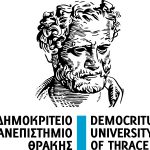
Democritus University of Thrace (DUTH) was established in 1973 and is currently operating eight Schools and nineteen Departments in four cities of Thrace. It has 850 employees, 21,000 students, 2,300 postgraduate students, and about 1,750 Ph.D. students. Relying on its quality of teaching and research level, DUTH has secured a place among the best Greek Universities. DUTH has participated/ is currently participating in several EU-funded programs, such as FP7 actions: (27; of which four are MSCA), H2020 actions: (12; two of which are MSCA and another one in the Grant Preparation Phase), JUST Action Grants: (2), Life actions: (1), Erasmus+ actions: (2), Jean Monnet Chair (1), etc. Furthermore, the University is participating in several transnational and national projects. The projects cover several scientific areas such as engineering, IT, environmental and agricultural sciences, medicine, molecular biology, law, economics, sociology, humanities, education, and physical education. The Laboratory of Ecological Engineering and Technology of the Department of Environmental Engineering of DUTH has been established in 1998 and it is one of the seven laboratories of the Department. The objective of the Laboratory covers extended scientific areas, such as the ecosystem management and restoration, environmental hydraulics and hydrodynamics, hydrogeological characteristics of aquifers, ecological agriculture, and stock farming with an emphasis on the reduction of pollutants emission to the environment, application of models, operational tools and DSS with the use of neural networks and fuzzy models, water resources management with the use of GIS.
Presently, the Laboratory is involved in several European-funded projects as INTERREG IVC, INTERREG Cross-border Greece-Bulgaria, FP7, Black Sea, and ENPI CBC-Med Projects. The Lab participated in
the FP7 project FIGARO on precision irrigation and implemented a series of field experiments on cotton crops combining in-situ data, downscaled numerical models, and decision support systems. Since June 2017 the Laboratory leads an H2020 research project (ODYSSEA).
Role in the project: DUTH supports GA1, leads the Nestos pilot in Greece within GA2, contributes to the capacity building held in DUTH’s pilot area and supports the GA Communication.
Environmental Protection and Mining Inspection Body of the Republic of Armenia 
Environmental Protection and Mining Inspection Body of the Republic of Armenia (EPMIB) acts on behalf of the Republic of Armenia and implements supervisory and inspection functions as well as implements sanctions for the sake of environmental protection, usage of natural resources, reproduction, and mining. EPMIB has a great role in the implementation of policies in the field of nature protection and ecosystems, which is a whole body of structural and territorial units and has control over the laws and other legal acts of the Republic of Armenia. EPMIB’s operations and actions are directed towards the protection of the environment: the water resources, the soil, the subsurface, the flora and fauna, including the conservation of forests and specially protected natural areas and common use areas as well as are directed towards the rational use of natural resources, biosecurity, safe handling of hazardous materials and waste, environmental and utilization fees, and ensuring accurate calculation of the actual norms defined by the legislation of the Republic of Armenia.
Role in the project: EPMIB engages local stakeholders from the government and society: national agencies, regional authorities, bodies managing the protection of the special protection areas and zones, private stakeholders, and the broader public to better understand the needs and capacity. It also efficiently integrates acceptability and utilization of new tools, products, and services ensuring the sustainability of the project and transparency of the process. EPMIB carries out the assessments within the Armenian pilot in cooperation with the LP, and takes part in GA-2 activities for capacity building.
Green Alternative
Green Alternative (GRAL) aims at protecting the environment, the biological and cultural heritage of Georgia through promoting economically sound and socially acceptable alternatives, establishing the principles of environmental and social justice, and upholding public access to information and decision-making processes. The NGO is targeting large-scale development projects with detrimental environmental and/or social impacts. In each project or policy campaign, Green Alternative combines the campaign work with capacity building of the local groups and facilitates their direct involvement in the campaigns. Green Alternative cooperates with non-governmental organizations both inside and outside Georgia as well as with various international and national organizations and networks working on environmental, social, and human rights issues. Since 2005 the organization has been a member of the Monitoring Coalition of the ENP (European Neighbourhood Policy) Action Plan. Since establishment Green Alternative is a member of CEE Bankwatch Network – one of the
strongest networks of environmental NGOs in Central and Eastern Europe.
Role in the project: GRAL leads the GA 2 Capacity Building activity, coordinates the Georgian pilot, and contributes to the GA Communication.
Odessa National I.I. Mechnikov University
The Odessa National University, Ukraine (ONU) was established in 1865, has 8 departments, 3 Educational Institutes, and 72 programs. It prepares bachelors, masters, and PhDs in 30 specialties and trains over 20000 students from 25 countries. The University has at its disposal 17 autonomous research laboratories, a scientific library, botanical gardens, as well as paleontological, zoological, and geological-mineralogical museums, with a total staff of more than 1700. The ONU has a scientific department comprising 800 scientists, specialists, engineers, and administration. The main department of the University involved in the proposed project is the Regional Centre for Environmental Monitoring and Ecological Research (RCIEMER). RCIEMER has two field investigations areas: Diiester Delta water bodies(rivers, lakes, and liman) coastal marine waters near Island Zmiinyi in the Black Sea ( 35 km far from the Danube Delta) The main research activities of the RCIEMER are on freshwater and marine microbiology, hydrobiology, marine resources, and especially fishery; environmental and marine monitoring, management and protection; coastal zone studies; atmospheric and marine chemistry; climate and environment; modeling of natural ecosystems; improving the quality of life and management of living resources; environment and sustainable development, environmental sensing, environmental impact assessment, using of space images for coastal dynamic and database creation.
Role in the Project: ONU co-leads GA1 by coordinating all pilots, leads the Ukraine pilot, supports capacity building locally, and GA Communication.
